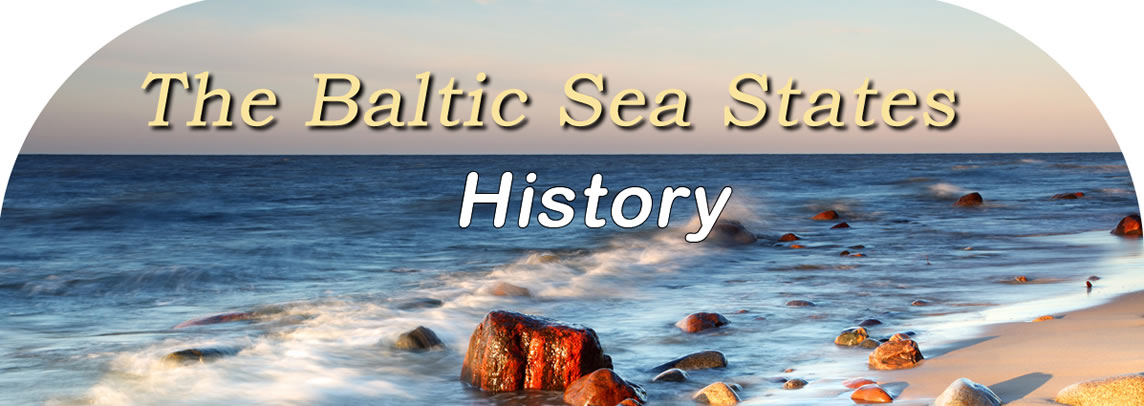
A history of Estonia
Ancient Estonia
Archaeological evidence shows
that human beings lived in the area now known as Estonia as early as
10,000 BC. Around 3500 BC, nomadic tribes began practicing
agriculture and putting down roots there, making Estonia one of the
longest continuously settled areas in Northern Europe.
Between 4000 and 3000 BC, Finno-Ugric tribes began migrating into
Estonia, bringing their language, their religion and their customs.
While some of them stayed in the immediate area, others migrated to
the area now known as Finland.
Although Estonia was never part of the Roman Empire, it was well
known to the Romans, and was mentioned in the "Histories" written by
the Roman senator Tacitus in the 1st century AD. The country's
modern name "Estonia" is believed to be a corruption of Aestii,
which was the name Tacitus used for the area.
Estonia in the Middle Ages
Estonia did not convert to
Christianity until the 12th century when Pope Celestine III launched
the Northern Crusades to oust the last remaining pockets of paganism
from Europe. Estonian tribes staged a fierce resistance that lasted
several decades before capitulating to the new religion and
surrendering their independence to Danish crusaders. Estonia largely
remained under either Danish or Swedish political control until the
16th century.
The Protestant Reformation spread to Estonia in the early 16th
century, and by 1600, Lutheranism dominated church architecture and
the daily life of the people.
Estonia and Russia
In 1561, Estonia actively
solicited to become part of the Swedish Empire in order to receive
protection from aggressive Russian and Polish interests. When Sweden
lost the Great Northern War in 1721, however, all of Estonia came
under Russian rule.
Inspired by the French Revolution and the Romantic Movement, many
members of Estonia's educated class embraced the cause of Estonian
nationalism in the 19th century. Newspapers began to be published in
the Estonian language rather than in Russian or German. Following
the Estonian War of Independence between 1918 and 1920, Estonia
gained its independence from Russia and established itself as the
Republic of Estonia.
Independence proved to be short lived, however. In 1940, Joseph
Stalin and Adolph Hitler made a secret pact that paved the way for a
Russian takeover of the Republic of Estonia in 1940. Soviet control
resulted in a reign of terror. During World War II, Estonia lost 25
percent of its population to executions, military conscriptions and
forced labor camps.
Following World War II, Estonia was annexed as a satellite nation of
the Union Soviet Socialist Republics, and many more executions took
place. Most of Europe refused to recognize Estonia as part of the
USSR. Estonians formed a huge guerrilla movement called the Forest
Brothers, but the guerrillas could not prevail against the powerful
Russian army. The dissident movement in Estonia continued to grow,
however, and in 1990, disobeying orders from Moscow, Estonia held
elections. In 1991, the Republic of Estonia was established once
again.
Today, Estonia has a reputation as one of the most socially
progressive and technologically advanced countries in all of
northern Europe. Estonia joined the European Union in 2004, becoming
the first of the former Soviet Socialist republics to embrace
pan-Europeanism.

© Baltic21.org
2013, All Rights Reserved
|

